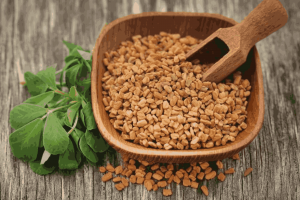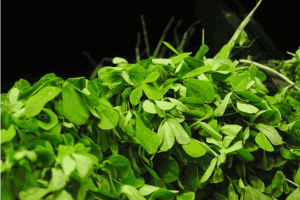How to Grow Fenugreek from Seed to Harvest
Fenugreek (Trigonella foenum-graecum L.) is a leafy vegetable belonging to the Leguminaceae family. It is cultivated as a leafy vegetable crop. It is also used as cattle fodder. Fenugreek seeds are rich in ‘medicinal properties’.

Fenugreek called with different names in other Indian languages: Methi, Fenugreek, Methya, Menthya, Yendayam
Uses:
- Adding tender fenugreek leaves in various vegetables and meat gives a good taste.
- Fenugreek seed powder is used as a spice in various curries and pickles
- Fenugreek seeds have many medicinal properties. Used to reduce diabetes and improve digestion.
- Color, alkaloids and steroids are isolated from the seeds and used in various industries
Varieties:
Deshwali Varieties (low smell varieties): Plants are (40-70 cm tall) grow quickly. Flowers are white, fruits are 8-10 cm long and have 10-15 seeds .
Aromatic Varieties (Scented Varieties): These varieties are mostly grown in North India. These plants grow slowly and stunted. The flowers are pale pink in color and the fruits are small sickle-shaped.
Kasturi Menthi, Marwar Menthi and Champa Menthi are prominent among the aromatic varieties. Musk fenugreek is high yielding. (Seeds : 2.5–3.0 quintals/acre, leafy greens 3.6–4.0 tons/a).
Varieties Developed:
Lam Selection-1: The variety was released from the Lam Research Center of Acharya NG Ranga Agricultural University, Guntur. It grows bushy and produces as many leaves and seeds as possible. Harvesting Period is 75-80 days.
Pusa Early Bunching: This is a variety released from Indian Agricultural Research Institute, New Delhi. This fenugreek is suitable for cultivation as a leafy vegetable and seed.
Co-1: This variety was released from Tamil Nadu Agricultural University. It is a high yielding variety suitable for leafy greens and seed.
Hissar Suvarna (H.M. 103): This variety is released from Haryana Agricultural University, Hisar.This is Suitable for vegetables and seeds. This type of Pusa gives 20-30 percent higher yield than early bunching.
Soils:
Soils with a Soil PH levels 6.0–7.0 and alluvial soils with drainage are suitable for this crop.
Preparation of the soil:
3-4 times well plowed, cattle manure should be mixed in the last push.
Time of Sowing: In the field, this crop is sown in the months of September-November as a winter crop. It is sown in March-April months in hilly areas As a leafy vegetable, it can be sown throughout the year.
Seed Per Acre:
Seed Rate: 10 tones of seed required per acre
Harvesting: 25-30 days after sowing.
Yield: 2.5-4 tones per acre
Deshawali varieties : 10 kg/a. Fenugreek: 8 kg/a. If the seeds are kept in water for two days before sowing, the germination percentage will be high.
10 kg of seed per acre is required for spreading and better to sow in rows. The seeds should be sown 5-10 cm apart at a distance of 25 cm between the rows.
As it is a leguminous crop, if it is sown in the field for the first time, if rhizobium culture is applied to the seed before sowing, it will absorb nitrogen from the atmosphere and plant growth and branch production will be good. Water well with copper fungicide to prevent root rot. Seeds germinate in 7-10 days under rain dependent conditions and 4-5 days under irrigated conditions.

Water Management:
Depending on the soil, observe soil moisture and water as needed. Water should be given immediately after sowing and after 4-5 days and water after each cut. If the crop is waterlogged, it will be damaged. So proper water management should be undertaken.
Harvesting:
The first cutting should be taken 25-30 days after sowing. After that one cutting should be taken every 12-15 days. After 2-3 pruning’s, the plants should be left for seeds.

Yield:
Deshwali varieties yield 2.5-3.0 tones per acre
Fenugreek yields 3.5-4.0 tones per acre.
Follow WalPencil to get to know cultivation tips for other vegetable crops like Curry Leaf, Spinach, Amaranthus etc.
